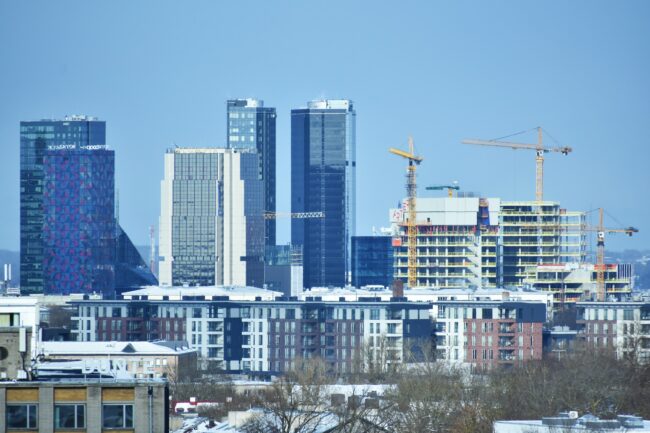In the first quarter of 2023, construction volume fell by 11%
Text Mark Taylor Photo Ilja Tulit / Unsplash
According to data released by Statistics Estonia, in the first quarter of 2023, the total production value of Estonian construction enterprises in Estonia and abroad decreased by 11 per cent at constant prices compared with the same period a year ago.
The total production value of construction enterprises was 803 million euros, including 594 million euros’ worth of building construction and 209 million euros’ worth of civil engineering. Compared with the first quarter of 2022, the volume of building construction fell by 15 per cent. The volume of civil engineering works (roads, bridges, port facilities, pipelines, communication and electricity lines, sports fields, etc.), however, remained at the same level.
“The construction market is affected by the continued rise in construction prices, rising interest rates, and declining consumer confidence. The domestic construction market was primarily influenced by the decreased volume of building construction. Fewer new buildings were built and there were fewer building repair and reconstruction works. The volume on civil engineering was up slightly (1.4 per cent) from a year earlier, mainly due to an increase in repair and reconstruction works,” said Merike Sinisaar, a leading analyst at Statistics Estonia.
The construction volume of Estonian construction enterprises operating abroad decreased by 13 per cent compared with the same quarter last year. There was a decline in both building construction and civil engineering works. However, construction in foreign countries accounted for only 6 per cent of the total construction volume.

According to the Register of Construction Works, 2,225 new dwellings were completed in 2023, which is 78 per cent more than the year before. Nearly half of the completed dwellings were in Tallinn (49 per cent), followed by the rural municipalities in the vicinity of Tallinn (20 per cent), and Tartumaa (18 per cent).
The demand for new dwellings has declined. Building permits were issued for the construction of 1,330 dwellings, which was down 29 per cent from a year earlier. The most popular type of housing was still a block of flats.
The number of completed non-residential buildings was 265, with a useful floor area of 184,600 m2. New offices, industrial, and storage premises accounted for the biggest share of non-residential building construction. Compared with 2022, there was an increase in both the useful floor area and the volume of completed non-residential buildings.
To learn more about this and similar topicsCivil Engineering Construction Dwelling Industrial Premises Offices Residential Buildings Tallinn Tartu










